#garyhawkins
Explore tagged Tumblr posts
Text
What’s Your Story?

If your company provides solutions, particularly technology solutions, to the retail industry, selling is a mandatory activity and in many younger companies that duty often falls to the founder, CEO, or other key executive. The CART team has worked with hundreds of young tech companies and we’ve seen some things that work and we’ve seen many things that don’t work as well so thought we’d share some lessons with you. Many technology company people are incredibly smart when it comes to the tech, but unprepared when it comes to the selling of it.
First, sell your story, not the technology. It takes a lot to found a company or to join a young company at an early stage - it’s not an easy thing. So chances are you’re pretty passionate about what capability you’ve developed or what your company is doing. When you are talking with a prospective customer, let that passion come through. Prospects always hear about features and functions, why this widget is better than that widget. What they don’t always hear is why you are doing what you do. Tell a story that highlights the problem you’re trying to solve - one way to do that is to speak naturally, like you’re talking to a friend or acquaintance. Then tap that same passion when you talk with a prospective customer.
How do you do what you do? This still is not the time to talk about your specific product or solution. What you want to focus on next is how your solution works, how it does what it does. Are you using AI and machine learning to help solve a problem? Does AI and ML power enhanced machine vision enabling your capability to do something special? Focusing on the how is where you want to separate your capabilities from competitors. The how is where your magic happens.
Lastly, and finally, you can speak to the specific product or solution your company is selling. This is where you can talk about all the cool features and functions your capability provides. But here’s the thing: If you’ve done a great job with telling your story about why you’re doing what you do and you’ve done a good job talking about how your solution does what it does, you’ve probably got the sale pretty well made before you even get to the specific product.
So now you’ve got your presentation flow down and its time to practice. For some people, actually writing out a script can help you be succinct in what you’re saying. For other people, creating a list of bullet points is enough to guide them through a presentation. Do whatever works for you but do think about what you’re going to say ahead of time and practice it.
Lastly, be engaging. Make eye contact. Don’t just read a sales presentation - engage and talk with the people you’re with. And absolutely, never ever, turn your back to the people you are talking to. It’s unprofessional to say the least. Seems like a no-brainer and yet we see people do this all the time.
Creating and building a great technology is only half the battle. Selling and positioning your new capability is where the battle is won.

Gary Hawkins, Founder and CEO of CART
#cart#advancingretail#advancing retail#cartisadvancingretail#hawkins#garyhawkins#technology#tech#innovation#events#liveevents#pitch#grocery#supermarket#retail#retailers#independent retailers#independent retail
1 note
·
View note
Photo

Smoke N Drank featuring @purpwhite_nolummy New Single! Available now on all digital platforms @spotify @youtube #newmusic #realone #realone209 #real1 #garyhawkins #smokendrank #caliundergroundmusic #cannabiscommunity #hemphop #hiphop #itunes #spotify #applemusic #google #new https://www.instagram.com/p/B0X2X4Unjy7/?igshid=16876xvw4n8bv
#newmusic#realone#realone209#real1#garyhawkins#smokendrank#caliundergroundmusic#cannabiscommunity#hemphop#hiphop#itunes#spotify#applemusic#google#new
0 notes
Video
vimeo
“Not His Hands!” is a segment from In My Mind, a film from the Center for Documentary Studies (CDS) at Duke University documenting Jason Moran and the Big Bandwagon’s 2009 original interpretation of Thelonious Monk’s 1959 Town Hall performance.
Jason Moran -piano Tarus Mateen --bass Nasheet Waits --drums Ralph Alessi -trumpet Logan Richardson III -alto sax Walter Smith III --tenor sax Isaac Smith --trombone Bob Stewart --tuba
2 notes
·
View notes
Text
CART Weekly Report 10/3/19
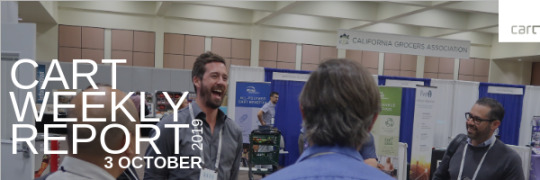
THE GOLDEN OPPORTUNITY FOR U.S. DRUGSTORES | Nielsen
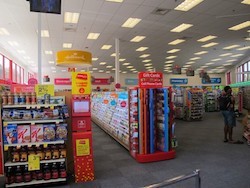
Gary’s Take: The convergence between the massive health care and food industries in the United States continues to gain momentum and retailers and brands not paying attention will miss major opportunities and risk their shoppers moving on without them.
While supermarket retailers with in-store pharmacies are right in the middle of this convergence, drug stores are in a more challenging position. Food is increasingly being viewed and understood as medicine, putting grocery retailers in prime position. Drug stores are improving their food selections but have a long way to go.
Needless to say, any retailer in the food, pharmacy, or health and nutrition space should be aware of the convergence underway and figure out how they can benefit their shoppers.
THESE 18 RETAILERS HAVE FILED FOR BANKRUPTCY OR LIQUIDATION IN 2019 | Business Insider
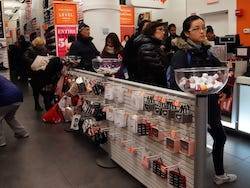
Gary’s Take: Yesterday, Forever 21 filed for bankruptcy, adding to a growing list of retailers closing stores and going out of business. Many of these retailers are in non-food related channels like apparel, toys, etc. but it is only a matter of time before we see an acceleration of bankruptcy filings, store closures, and acquisitions in the supermarket sector. I believe this acceleration has already started but it is occurring across the independent sector of smaller retailers where filings don’t make the news. How it shows up though is in consolidation happening at the wholesaler level as the wholesalers seek to maintain their volume through acquiring other smaller distributors.
I also continue to believe that the majority of retail executives do not yet fully understand what’s coming. I hear more execs talking about change and innovation and exponential growth of technology but its almost as if they are just saying the words. Technology and all it enables is moving faster every day, and the exponential growth of computer processing power is creating industry disruptive capabilities at a growing pace.
The challenge for the retail industry is three-fold: 1) putting in place processes like the CART Innovation Program to build discovery and awareness of new capabilities, 2) train and educate your organization to be more open to innovation, doing things differently, and moving faster, and 3) develop a strategy for where you want to go and create a roadmap identifying what systems, processes, and practices need to be developed to get you there. BALANCING TECH WITH THE HUMAN TOUCH IN RETAIL | tech radar.pro

Gary’s Take: That automation is transforming retail is no longer in debate. The only question is what area of retail operations are going to be automated and what retailers are going to do with the savings. I believe automating jobs that people really don’t want to do, like floor cleaning, makes a lot of sense and everyone wins. And while I believe that Amazon-Go like technology will eventually make its way to full supermarkets, I’m not sure that’s a great thing.
People are social animals and shopping has been a social activity, seeing your neighbors, family, or friends at the local supermarket. Removing human interaction through automation can transform the shopping experience to a sterile, people-free transaction but eliminates a massive opportunity for retailers to actually foster and grow relationships with their customers.
WHAT WE HAVE TO SAY:
RETAIL AND CUSTOMER EXPERIENCE - GLOBAL TRENDS | Thinking Heads

HOW TO FOSTER EMPLOYEES INTO BRAND AMBASSADORS by Andrew Hoeft, Retail Process Innovator | CEO at Pinpoint Software

Solution Highlight: Date Check Pro

New Date Check Pro e-Book!
What Does it Mean to be a Community Grocer in 2020? This eBook dives into the strategies and tactics you can put into place in order to make an impact as a community grocer in 2020.
HAPPENINGS:
UPCOMING RETAIL TOMORROW INNOVATION DAYS/EVENTS
INNOVATION PROGRAM AT HY-VEE HEADQUARTERS - Des Moines, Iowa | November 6-7, 2019
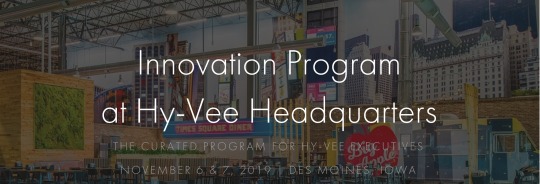
More INNOVATION PROGRAM Events to be Announced Soon! Notify me about upcoming and new events
X/SPECS 2019 - October 15 thru 17, 2019 at the Waldorf Astoria, Orlando

Store Design in the Age of “i” - Wednesday, 11:30am-12:15pm
THE RETAIL REVOLUTION at PORTLAND STATE UNIVERSITY’S CENTER FOR RETAIL LEADERSHIP - October 24, 2019, 12:30-5:00pm, Portland, Oregon
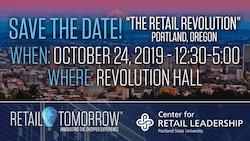
SPECS SHOW 2020 - The ForeFront of Physical Retail - March 15-17, 2020, Gaylord Texan, Dallas

Innovation, individualization and immersion are all shaping the future of retail. Savvy retailers are embracing more immersive shopping experiences, big data intelligence, and deep operations and systems integration to continue innovating their store designs in this new age of “i.”
CART COMMUNITY. GET ON THE INSIDE. MEMBERSHIP HAS BENEFITS.
Become part of the epicenter of retail innovation exclusive network. The place where retail decision makers and solution providers come together to advance retail into the future.
✔️Blogs ✔️Newsletter ✔️Webinars ✔️Accelerator ✔️Pitch Events ✔️Solution Spotlights ✔️Innovation Programs ✔️Educational Content
FOR RETAILERS>> Proven programs to advance your business
FOR SOLUTIONS>> Your growth engine into retail
VIEW ALL SOLUTIONS HERE
CONTACT US
TELL ME HOW TO GET MY SOLUTION ADDED TO CART

Get the CART Weekly Report delivered to your inbox. Sign up here.
Quote of the Week: Innovation is not the product of logical thought, although the result is tied to logical structure ~ Albert Einstein
#cart#advancingretail#advancing retail#cartisadvancingretail#hawkins#garyhawkins#sterlinghawkins#retail#retailing#tech#technology#emerging technology#innovation#innovationlab#innovationdays#events#keynote#keynotespeaker#grocery#groceryindustry#supermarket#supermarketindustry#innovation gap#weeklynews#technews#weeklynewsreport#newsinsight#california#technology solutions#retail solutions
0 notes
Text
CART Weekly Report 9/19/19

TURNING CUSTOMER DATA INTO ENGAGING SHOPPER EXPERIENCES | Supermarket News

CHASING SHINY OBJECTS: ARE GROCERS INVESTING IN THE RIGHT TECHNOLOGY | GroceryDive

AS E-GROCERY MATURES, FULFILLMENT STRATEGIES DIVERGE | Supply Chain Dive

IN POWER MOVE, WALMART EXPANDS DELIVERY UNLIMITED | RetailWire

Sterling’s Take: It's great to finally see a full resurgence of the physical store. We've specifically been putting stores around people that buy things for the better part of 100 years. Why not use them most effectively? Store design will continue to evolve, but for Walmart to roll this out so broadly they must have seen performance that really resonated. I don't know if it's going to draw customers from competitors, but it does open up the opportunity to their entire customer base so more people (perhaps not formally doing much ordering online) will take part.
WHAT WE HAVE TO SAY:
THE PROMISE AND PERIL OF RETAIL PERSONALIZATION | Gary Hawkins

iRetail: A new way to think about retail
Data Driven Shopping Experiences | Groceryshop
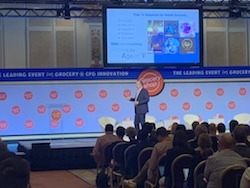
Data is the Fuel Powering Retail in the Age of ‘i’ | Gary Hawkins
👉 5 ‘i’s Required for Retail Success:
Individual
Intelligence
Integration
Immersive
Innovation
HAPPENINGS:
UPCOMING RETAIL TOMORROW INNOVATION DAYS/EVENTS
CGA STRATEGIC CONFERENCE 2019 - September 29-October 1, 2019
RETAIL REVOLUTION AT PORTLAND STATE - October 24, 2019
ENERGIZER - November 14, 2019
More Events to be Announced Soon!
Notify me about upcoming and new events
MINDING THE GAPS - CGA STRATEGIC CONFERENCE 2019 - Mission Hills Country Club in Rancho Mirage, September 29-October 1, 2019

GMDC SELF-CARE SUMMIT - October 3 thru 7, 2019 in Indianapolis, IN
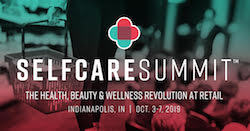
X/SPECS 2019 - October 15 thru 17, 2019 at the Waldorf Astoria, Orlando

Store Design in the Age of “I” - Wednesday, 11:30am-12:15pm
THE RETAIL REVOLUTION at PORTLAND STATE UNIVERSITY’S CENTER FOR RETAIL LEADERSHIP - Portland, Oregon - October 24, 2019 12:30-5:00pm
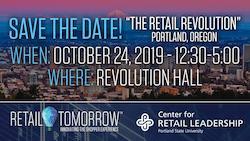
SPECS SHOW 2020 - The ForeFront of Physical Retail - March 15-17, 2020, Gaylord Texan, Dallas

CART COMMUNITY. GET ON THE INSIDE. MEMBERSHIP HAS BENEFITS.
Become part of the epicenter of retail innovation exclusive network. The place where retail decision makers and solution providers come together to advance retail into the future.

✔️Blogs ✔️Newsletter ✔️Webinars ✔️Accelerator ✔️Pitch Events ✔️Solution Spotlights ✔️Innovation Programs ✔️Educational Content
FOR RETAILERS>> Proven programs to advance your business
FOR SOLUTIONS>> Your growth engine into retail
VIEW ALL SOLUTIONS HERE
CONTACT US
TELL ME HOW TO GET MY SOLUTION ADDED TO CART
Get the CART Weekly Report delivered to your inbox. Sign up here.

Quote of the Week: An essential aspect of creativity is not being afraid to fail. ~ Dr. Edwin Land
#cart#advancingretail#advancing retail#cartisadvancingretail#hawkins#RetailWire#events#retail#retailsolutions#retail solutions#technology#tech#innovation#innovation gap#weeklynews#technews#weeklytechnews#garyhawkins#sterlinghawkins#technology solutions#techsolutions#innovationdays#walmart#delivery#personalization#personalized#relevant#relevancy#contextual relevancy#contextual marketing
0 notes
Text
CART Weekly Report 8/15/19

AMAZON DELIVERY ROBOTS ARE OFFICIALLY ON THE STREETS OF CALIFORNIA | ZDNeT
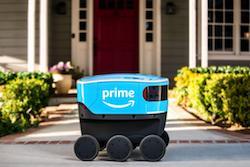
Gary’s Take: Amazon is taking robots to the street as it rolls out a test of last-mile delivery robots in Southern California. Amazon is joining other companies like Starship Technologies and Refraction AI in using automated robots to do home delivery of products. Amazon’s entry into this space will do nothing but speed the transformation of delivery. Supermarkets are an ideal launching point for robotic delivery as the stores are already in the neighborhood and near to shoppers. Watch for this space to begin moving fast.
ALEXA, TIME FOR CLASS: HOW ONE UNIVERSITY PUT AN ECHO DOT IN EVERY DORM ROOM | CNET

Gary’s Take: Amazon being Amazon is pushing hard in many directions simultaneously as shown by its aggressive deployment of Alexa in a fast growing number of sectors. Already well established in homes, Alexa is moving into cars, the workplace, apartment buildings, libraries, hospitals, and now university dorm rooms. Amazon’s goal is to make Alexa ubiquitous - the idea being that you are surrounded by ‘Alexa’ throughout your day wherever you are and wherever you go. Voice is on its way to becoming the next primary user interface replacing keyboards. Are you ready?
CASHIERLESS STORES MAKE INROADS IN U.S. | Wall Street Journal

Gary’s Take: Amazon Go-like technology is beginning to spread fast as Amazon opens new Go stores, Sam’s Club and Giant Eagle test AI driven frictionless shopping and more retailers are entering the space. The technology is potentially game-changing, eliminating a major labor cost and creating a very new shopping experience. According to the article, an estimated 100 retailers around the globe are said to be testing or piloting the technology.
AMAZON GETS SERIOUS ABOUT BEING YOUR PERSONAL STYLIST | FORBES

Sterling’s Take: The key to Amazon is their relentless pursuit of change. This is probably a good move for Amazon, but it’s not an end game. I’m sure they’re going to continue to evaluate their progress into fashion and continue to iterate. One move isn’t likely to make a dramatic difference. However, continuous evaluations/adjustments over time do.
WILL THE NEXT BIG THING SINCE STARBUCKS BE RUN BY ROBOTS| RetailWire

Sterling’s Take: I don't think there's any question that robotics will play a more prominent role in coffee and foodservice in the future. But that doesn't mean humans aren't ever involved -- it starts to free people up to focus on things that humans are just better at: customer interaction, developing the experiences around the robots, etc. The unrelenting march of technology will continue on. It's up to us to make sure we're using them to improve human experiences, not just replace them.
WHAT WE HAVE TO SAY:
THE RETAIL APOCALYPSE CONTINUES | Gary Hawkins

RETAILERS: HOW DO YOU EVALUATE NEW INNOVATIVE SOLUTION PROVIDERS | Gary Hawkins

SOLUTION PROVIDERS: WHAT PROBLEM ARE YOU SOLVING? | Gary Hawkins

HAPPENINGS:
UPCOMING RETAIL TOMORROW INNOVATION DAYS/EVENTS
WAKEFERN - August 21, 2019
IMPERIAL DISTRIBUTORS - September 5, 2019
CGA STRATEGIC CONFERENCE 2019 - September 29-October 1, 2019
RETAIL REVOLUTION AT PORTLAND STATE - October 24, 2019
THE DISINTERMEDIATION CHALLENGE

In this new Retail Tomorrow podcast, recorded at GMDC’s annual GM conference in Denver, the focus was on the ways in which startups are working to disintermediate traditional retailers … how retailers can turn these innovations to their own advantage … why cultural resistance within companies can be the ultimate enemy of progress … and even brainstorm about a business model that could’ve made Toys R Us relevant again. You can listen to the Retail Tomorrow podcast here, or on iTunes or GooglePlay. The Retail Tomorrow podcast series is a production of GMDC, the Global Market Development Center. Featuring : • Patrick Fore, CEO and co-founder of Fleat. • Sterling Hawkins, co-founder of the Center for Advancing Retail & Technology (CART). The host: Kevin Coupe, MorningNewsBeat’s “ContentGuy.”
Pictured, left to right: Patrick Fore, Kevin Coupe, Sterling Hawkins
E-COMMERCE IN THE AGE OF ‘i’ [Webinar Recap]

Retail expert Gary Hawkins reveals how Amazon sellers must leverage new innovations and customer centricity to provide personalized shopping experiences. By Natalie Taylor August 7, 2019
GROCERYSHOP - September 15-18, 2019 at the Venetian in Las Vegas

MINDING THE GAPS - CGA STRATEGIC CONFERENCE 2019 - Mission Hills Country Club in Rancho Mirage, September 29-October 1, 2019

GMDC SELF-CARE SUMMIT - October 3 thru 7, 2019 in Indianapolis, IN

X/SPECS 2019 - October 15 thru 17, 2019 at the Waldorf Astoria, Orlando

Store Design in the Age of “I” - Wednesday, 11:30am-12:15pm
THE RETAIL REVOLUTION at PORTLAND STATE UNIVERSITY’S CENTER FOR RETAIL LEADERSHIP - Portland, Oregon - October 24, 2019 12:30-5:00pm
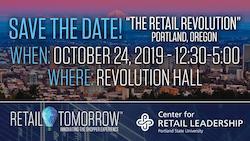
SPECS SHOW 2020 - The ForeFront of Physical Retail - March 15-17, 2020, Gaylord Texan, Dallas

CART COMMUNITY. GET ON THE INSIDE. MEMBERSHIP HAS BENEFITS.
Become part of the epicenter of retail innovation exclusive network. The place where retail decision makers and solution providers come together to advance retail into the future.

✔️Blogs ✔️Newsletter ✔️Webinars ✔️Accelerator ✔️Pitch Events ✔️Solution Spotlights ✔️Innovation Programs ✔️Educational Content
FOR RETAILERS>> Proven programs to advance your business
FOR SOLUTIONS>> Your growth engine into retail
VIEW ALL SOLUTIONS HERE
CONTACT US
TELL ME HOW TO GET MY SOLUTION ADDED TO CART
Get the CART Weekly Report delivered to your inbox. Sign up here.
Quote of the Week: Without change there is no innovation, creativity, or incentive for improvement. Those who initiate change will have a better opportunity to manage the change that is inevitable. ~William Pollard
#cart#advancingretail#cartisadvancingretail#advancing retail#hawkins#garyhawkins#sterlinghawkins#events#innovationdays#innovationevent#applynow#retailtomorrow#retail tomorrow#retailsolutions#strategy#tech#technology#techsolutions#weeklynews#weeklytechnews#technews#technewsinsight#weeklyreport#business#retailing
0 notes
Text
The Retail Apocalypse Continues

An article in USA Today a couple days ago called out that 2019 will see over 12,000 store closings by the end of the year, an estimated 50% more than in 2018. Already just eight months in to the year, there have been nearly 30% more store closings than in all of 2018, according to Coresight Research.
And we’re not close to stabilizing. UBS Securities expects the pain to continue into the future, stating that 75,000 more stores will need to close if eCommerce penetration rises to a projected 25% from today’s 16%.
While most of the damage is occurring in non-CPG retail sectors, supermarket retailers, drug store operators, convenience, and discount retail should not feel safe. Traditional retailers in these sectors are under growing siege as sales shift online, new competitors (think Amazon) enter the market, and tech-fueled innovation shifts the battlefield.
Perhaps the most significant challenge traditional retailers must face is changing consumer expectations. Consumers have come to expect, even take for granted, the personalization and customization in the digital world. Those expectations are quickly migrating to the physical world as 3D printing, personalized medicine, and customization of products spread into a growing number of markets.
So if you’re a retailer, how are you preparing for this new Age of ‘i’, a time when shoppers expect marketing, the shopping experience, even the physical store to be made relevant to them. And if you’re a solution provider, what capability are you bringing into the market to help retailers adapt to this new world?
Remember, the pace of change grows each day. Tomorrow will no longer resemble today.

Gary Hawkins, Founder and CEO of CART
#retail#apocalypse#cart#advancingretail#cartisadvancingretail#business#technology#innovation#techinnovation#iretail#consumer#CX#customerexperience#customerexpectation#storeclosing#store closings#hawkins#garyhawkins
0 notes
Text
Reclaiming Retail’s Customer Heritage

Today will be the slowest pace of change in your lifetime. Consider that for a moment. The ubiquitous iPhone was introduced just a decade ago, and today we take the app store and all the capabilities we have in our hand for granted. It seems like only yesterday that robots were the realm of science fiction, yet today we find them roaming store aisles, autonomous pods delivering groceries, and automated warehouses fast becoming the norm. Even the production of food itself is being transformed as meat is grown in factories and greens are grown in trailers alongside the store.
The fast moving consumer goods retail industry is in chaos and the shift online is only the tip of the iceberg as disruption sweeps across every part of the supply chain. And this disruption is only just getting started. Technologies are converging, triggering even greater growth in world-changing capabilities. And even industries are converging as new technologies, consumer interest, and economic forces come into play.
Many retailers are being whipsawed by the shift online and the explosive growth of innovation, not knowing where to focus next. Amidst this chaos, some retailers are trying to do everything while others are overwhelmed to the point of paralysis. And all retailers are moving too slowly, often not understanding the underlying forces at work driving this new world.
Five year plans, a staple of management, are obsolete before the save button is clicked as new capabilities, new competitors, and new consumer demands arise almost daily. To bring order to the chaos retailers need to focus on the one constant that is ever-present: The customer.
We have entered the Age of ‘i’. This is a time of quickening innovation; expanding intelligence powered by artificial intelligence feeding off big data, and immersive experiences provided by augmented and virtual reality, with all of it increasingly focused on making the world all about each individual person.
Retail in the Age of ‘i’ reclaims the industry’s heritage of customer focus growing from the days of the corner store. Today, retailers have the ability to leverage vast new technologies to once again focus on the individual customer, partnering with each customer as we journey forward.
And beyond technology, retailers have an opportunity to inject humanness into a shopping experience that is at risk of becoming an automated, people-free process of replenishment. The retail industry is rapidly approaching a crossroads. One path is leading to an efficient, cost-effective, yet sterile, shopping environment ruled by automation. The other is positioning technology in service to customers, taking advantage of automation to redirect human associates to engage with shoppers in either the physical or virtual environments, and fostering the personal relationships between the merchant and the customer that were a part of life decades ago.
“Throughout history, human beings have inherently been social creatures. For millions of years we’ve genetically evolved to survive and thrive through the “togetherness” of social groups and gatherings. Today, modern communication and technology has forever changed the landscape of our human interaction, and as such, we often decline without this type of meaningful personal contact. Today’s highly individualistic, digitally remote, and material driven culture is now challenging all of this, as we turn to science to unlock the mysteries of human connection and wellness in a digitally connected world.”
I believe there is business opportunity in doing the right thing for people and our communities. That people today, staring into their digital screens for hours at a time, interacting via Facebook or Twitter, and being drawn to every new shiny piece of tech, actually covet human connectedness. Retailers, especially food retailers, are in a unique position to deliver this powerful human experience given that people still need to eat daily and, as we’ll see later in the book, the growing connectedness between food and health and wellbeing.
From a business perspective, every customer interaction, whether in the digital realm or the physical store, is vital to acquiring, growing, and retaining customers. Focusing on each individual customer forces retailers to think beyond generalizations - investing in a health and wellness program is good for my shoppers - to focus on leveraging technology to serve the individual; ‘how can I help Sasha improve her life by providing products and services contextually relevant to her?’. This involves not looking at Sasha as representative of a cohort, but - literally - building a relationship with Sasha as an individual.
Not only is the customer the only constant in today’s world of non-stop disruption, but customers are expecting, even demanding, that the world be made relevant to them. And why not? Consumers take for granted the personalization and relevancy in the digital world, and expect the same from brick & mortar retailers.
An excerpt from Retail in the Age of ‘I’. Available on Amazon.com

Gary Hawkins, Founder and CEO of CART
#garyhawkins#retail#grocery#supermarket#retailing#tech#technology#iretail#retail technology#RetailTech#retail technologies#emerging technology#emergingtech#paceofchange#exponentialgrowth#FMCG#humanizingtechnology#customer#customercentric#customer centric#customerexperience
0 notes
Text
CART Weekly Report 3/14/19

TECHNOLOGY DISRUPTORS ARE CAUSING INDEPENDENT SUPERMARKETS TO INNOVATE | RETAIL WIRE

Gary’s Take: Good discussion flowing from this article about the focus on technology at the recent NGA Show. I spoke to retailers wanting brand manufacturers to fund offers & promotions used in personalized marketing initiatives, not retailers expecting someone else to pay for the underlying technology. Retailers of all sizes - including independents - have an unprecedented opportunity to use cloud-based, affordable digital engagement capabilities to personalize each and every customer engagement, building relationships with their customers at scale. Retailers who make use of these capabilities AND who take responsibility for their marketing - not depending on brand marketing funds - can leapfrog larger competitors by providing meaningful savings on products relevant to each individual customer. Independents have long been short-changed by brand manufacturers when it comes to marketing funds, this is nothing new and is simply a fact of life. Independent operators simply have to be more creative and make their marketing spend work harder. It can be done.
THE TRANSFORMATION OF RETAIL - 75 WAYS RETAIL WILL CHANGE IN THE NEXT DECADE | THE ROBIN REPORT

Gary's Take: A big shout-out to Shoptalk 2019 for another great event! Shoptalk is at the cutting edge of retail industry transformation, bringing together thought-leaders and new innovative capabilities for powerful discussions and connections.
RETAIL IN THE AGE OF 'i'

Gary's Take: The fast moving consumer goods retail industry is rapidly approaching a crossroads. One path leading to an efficient, but coldly barren, shopping experience ruled by automation. The otherputs technology in service to retailers, helping them reclaim their customer heritage. Retail in the Age of ‘i’ returns the individual customer to center-stage, supported by big data intelligence, deep systems integration, immersive shopping experiences, and constant innovation. Amidst the tumult and disruption, Retail in the Age of ‘i’ provides retailers a path forward by focusing on the one constant: The customer.
SUGGESTED READING:
> 3 MYTHS ABOUT ARTIFICIAL INTELLIGENCE INDEPENDENT GROCERS SHOULD IGNORE | Gary Saarenvirta, Daisy Intelligence
> HERE'S THE OPPORTUNITY SHOPTALK IS MISSING | Gary Hawkins
> STORES SEE A FUTURE WITHOUT 'MAY I HELP YOU?' (THEY'LL ALREADY HAVE YOUR DATA) | Sapna Maheshwari
FEATURED BLOG OF THE WEEK:
MEET YOUR POINT OF SALE SOLUTION: MODULAR NOW™

Guest blog by Amy Pulcini, Marketing Manager, Innovative Workspaces
Innovative is pleased to have shown their Modular Now™ product line; a customizable mount solution for point of sale at The NGA show 2019.
With various pole heights and mount styles, extension arms, and accessories; Modular Now ™ is the perfect solution for any point of sale environment.
Expert engineering and a thoughtful production process means Modular Now™ is one of...LEARN MORE>>
HAPPENINGS:
Los Angeles Immersion Event - March 19-21 INFLUENCER MARKETING AND STORY-TELLING IN RETAIL

The fifth Retail Tomorrow Immersion will take us to LA and put you in the middle of the latest thinking in storytelling, “influencing” in its many forms, and how both are impacting retailers and brands. We’ll do a deep dive on this subject at Google and YouTube’s glittering new campus at the historic former Howard Hughes airfield.
Event details
SAVE YOUR SPACE! Spring 2019 Retail Innovation Pitch Event, Hosted Virtually on April 25, 2019

This webcast is designed to act as an accelerator for the broader retail industry, especially important now that retail innovation is being increasingly driven from outside forces such as rapid adoption of consumer technology and new competitors like Amazon / Whole Foods and Google. ATTEND THE WEBCAST
GET ON THE INSIDE.

Become part of the epicenter of retail innovation exclusive network. The place where retail decision makers and solution providers come together to advance retail into the future. CART Community
For Retailers and Wholesalers
For Solution Providers
VIEW ALL SOLUTIONS HERE
HOW CART WORKS
CONTACT US
TELL ME HOW TO GET MY SOLUTION ADDED TO CART

#cart#advancingretail#cartisadvancingretail#retail#technology#innovation#retailinnovation#retailing#grocery#supermarket#FMCG#retail solutions#resources#hawkins#garyhawkins#iretail#tech#disruption#ngashow#nationalgrocers#community#networking#innovativeworkspaces#POS#pointofsale#shoptalk#shoptalk19#retailtomorrow#gmdc#immersion
0 notes
Text
CART Weekly Report 2/21/19

What is your CLV Score? | Fox 5 Atlanta

Gary’s Take: Customer Lifetime Value is the way retailers can measure the effectiveness of their efforts to acquire, grow, and retain customers. Daniel is speaking at the CART Event, Sunday, Feb. 24 at 1pm, kicking off the NGA Show, where I'm releasing my new book, Retail in the Age of 'i'. CLV is one of the tools retailers can use to keep score as retailers embark into the future. Hope to see you in San Diego!
Grocers Aim to Capture More Advertising Dollars from CPG’s | Grocery Dive

Gary’s Take: It's easy to understand retailers chasing after incremental revenue streams such as that offered by digital ad spending from CPG brand manufacturers. But, in an age of personalization, every customer engagement - especially digital engagement - needs to be contextually relevant to to the individual customer. Every interaction can impact, positively or negatively, the lifetime value of that customer. Getting ads on my mobile for brands that are only mildly relevant, or worse, completely irrelevant to me, are not going to help maintain my loyalty. Retailers have a long history of chasing CPG marketing funds instead of focusing on their customers. Let's hope this is not another repeat.
15 Mind Blowing Stats about Mobile | CMO.com

Gary’s Take: The importance of mobile to the retail industry continues to grow as already a third of consumers have used mobile AR, app download and use continues to explode, and 5G connectivity is poised to radically transform and disrupt areas as yet unimagined by retailers and retail marketers. Retailers too often look at having a mobile app as just another item to check off on their to-do list, giving short shrift to the importance of user experience and capability. Mobile is the nexus of the physical and digital worlds of retail converging, opening the door to new customer services and experiences.
Retail in the Age of ‘I’ - A New World View for the Retail Industry | by Gary Hawkins now available on Amazon
Gary’s Take: Retail needs a way to bring order to the chaos of innovation as it disrupts nearly every activity across the supply chain, a beacon to fix upon and navigate through the growing storm. That beacon is the customer. And not just ‘the customer’ generically, but each individual customer you have shopping with you. As we proceed along the ever-rising growth curve of technology, five-year business plans become less and less reliable as we increasingly don’t know what what’s coming next. But there remains one constant in retail: The customer. Learn more about Retail in the Age of 'i' in my new book and by coming to the CART Event at the NGA Show 2019 this Sunday, Feb. 24, in San Diego. Everyone attending will receive a free digital copy of the book! Look forward to seeing you there!
Suggested Reading:
Kroger, Microsoft partner on retail-as-a service platform | Supermarket News
Shoptalk Presents 75 Ways Retail Will Change in the Next Decade | Zia Daniell Wigder, Chief Global Content Officer at Shoptalk and Co-Founder at GroceryShop
Featured Blog of the Week:
INDEPENDENT GROCERS: THRIVING IN UNCERTAIN TIMES

Guest blog by Venu Gopalakrishnan, Founder and Global CEO of Litmus7 Systems Consulting

Apply to Present
We help incubate ideas, concepts, products, services and other solutions with our community of retailers, brands, suppliers, innovators and other thought leaders to improve the overall shop ping experience for the consumer.
Join us for the Retail Tomorrow LA Lab* during the Retail Tomorrow Los Angeles Event on March 21st.
We're bringing together a highly exclusive group of 40+ retailers and brands. You'll have 10-15 minutes to present 1 on 1.
*fees apply
#cart#advancingretail#cartisadvancingretail#retail#hawkins#GaryHawkins#innovation#retailing#grocery#supermarket#mobile#mobiletechnology#ar#augmentedreality#apps#5g#5g technology#transformation#disruption#omnichannel#seamless#CPG#personalization#personalized#relevant#ngashow#ngashow19#relevancy#customer lifetime value#clv
0 notes
Text
It’s All About Relationships

My family’s store started as a summer farmstand by my great-grandmother in 1934. I can remember as a kid getting up early on Saturday mornings to go to the regional market with my father, looking to buy fresh fruits and vegetables for sale that day, supplementing what we grew on our farm. My favorite part was swinging by a local bakery to pick up donuts and baked goods to sell. Nothing like a donut still warm from the fryer, just dripping with glaze. What I also remember is how my grandfather seemed to know everyone. He knew Alice, and that she shopped on Wednesdays and loved fresh, local strawberries still warm from the field. He knew Ben, and that he liked his strip steaks cut extra thick. And even Mrs. Johnson and her dog Buck, a massive great dane, who loved getting a bone as a special treat from our meat department. I remember we shopped for Mrs. Gardner, delivering her groceries on our way home. And this was years before home delivery was a thing! That was personalized retail. The customer was the most important part of the business. And that was the constant refrain over the ensuing years. ‘The customer is the most important part of our business’ is the pablum I, and many others in the industry, was raised on. Except something happened between then and now. Stores became bigger and busier. Product assortment exploded. Competition developed from every quarter. And food became available anywhere and everywhere. As the industry grew larger we began to lose focus on the customer. How we made money - or at least how we thought we made money - began to shift. Merchandising — deciding what products to put on the shelves and which products to promote —became an exalted position in our organizations. The increasing focus on products grew hand in hand with a growing focus on obtaining marketing funds from brand manufacturers. One could easily make the case that it was because of marketing funds that products grew to take center stage. Today, many major retailers would not be profitable were it not for those subsidies that support sale prices to the shopper, help offset advertising costs, bolster category margins, and enrich the bottom line. In a very real sense, brand marketing funds have insidiously shifted retailer focus away from the customer to a dependency on products. Retail became product-driven. But let’s step back for a moment from retail to examine what’s happening in the world around us. As we saw earlier, 3D printing and augmented and virtual reality are transforming the world of mass produced goods. This signals a move from the industrial revolution to a world of customized products and services. The birth of the internet and the world wide web set the stage for the digitization of commerce, removing the personalization penalty for marketers who had to pay a high price for marketing differentiation in the physical world. In short, technology has fundamentally changed the world of one (product or service) to many (consumers) to a world of many (customized, personalized products or services) to one (shopper). Beyond the world wide web, perhaps no technology has fostered consumer expectation of relevancy more than the smartphone. Mobile has brought with it a fast-growing expectation of contextual relevancy, the shopper knowing that merchants have access to technologies providing realtime location in a store or mall. Between the mobile browser and the countless apps available today, each of us has access to the world from the device in our hand, and increasingly that world is tailored to each of us individually. And that brings us back to retail. In the midst of this Age of ‘i’, the retail industry remains largely on the sidelines. Weekly ads, printed and distributed with the newspaper, filled with mass promotions, are simply out of sync with what our customers want today. Sure, some industry marketing vehicles have gone digital, but a digital version of the mass ad is spam and syndicated coupons are only relevant if I go searching for them. But it doesn’t have to be that way. We as retailers can reclaim our customer heritage. We can use new technologies and capabilities to recreate those personal relationships of yesterday and become truly relevant to each of our individual customers today. And that’s what Retail in the Age of ‘i’ is all about. It is about fulfilling the destiny of retail by regaining a focus on the customer. It is about building relationships with each and every one of our individual customers. And it is about returning products to their rightful role in service to each of our customers.

Gary Hawkins, Founder and CEO of CART Leading customer-focused retail innovation #advancingretail
#garyhawkins#retail#grocery#supermarket#retailing#tech#technology#emergingtechnology#iretail#retailtechnology#RetailTech#retailers#retailtechnologies#emergingtech#paceofchange#exponentialgrowth#customerexperience#exponential growth#FMCG#humanizingtechnology#customer experience#customer#humanizing technology#customercentric#retail experience#CX#innovation#retailrelationship#innovative
0 notes
Text
Understanding the Age of ‘i’

Look about and you see that the world is becoming increasingly tailored to you, your interests, and your needs. We have come to take for granted the personalization and relevancy in the digital world, no longer thinking about our customized news feeds. We give no thought to the complexity of systems and algorithms driving the process of sorting through nearly 600 million products sold by Amazon, or the thousands of movies available on Netflix. The work behind the scenes provides us with relevant recommendations. We simply see the suggestions put in front of us and, more often than not, make a purchase.
AI Drives Customization
The recent growth of artificial intelligence is powering yet more customization in the digital world. It is AI powering the voice-enabled digital assistants like Amazon’s Alexa, Google’s Assistant, and Apple’s Siri. Amazon is intent on making Alexa ubiquitous in our lives, available not just in our homes but in our cars, offices, libraries, and even hospitals. The digital world is ours for the asking, any time, any place.
Forgot something for the dinner party tonight? Just ask Alexa to order it while you’re driving to work. And Alexa is getting smarter. Amazon recently received a patent tied to Alexa’s ability to recognize a user’s physical and emotional states and respond to how you’re feeling. Alexa can now tell if you’re suffering from a cold and suggest ordering chicken soup from Whole Foods to be delivered in the next couple hours.
If you want to shop by voice, you’re not limited to Amazon; Kroger recently joined Walmart, Walgreens, and other retailers providing consumers the ability to use Google Assistant to place online orders simply by speaking. Growing numbers of retail merchants are integrating to the predominant digital assistants, those provided by Amazon, Google, and Apple.
It is AI-powered voice recognition that is enabling a new world of services. Woebot is your virtual therapist available 24x7 through your smartphone. No need for a couch, no meds, and no dredging up childhood memories. Have a problem? Feeling sad or depressed? Just ask Woebot.
And if exercising is better than going to a therapist, Vi is at your service. Vi is your virtual personal trainer, accessing your workout data from your smartwatch, smartphone, and IoT-enabled equipment in the gym to provide realtime guidance — run faster! lift more! — communicated to you through your wireless headset.
Increasingly, the personalization found in the digital domain is manifesting in our physical world. 3D printing technology is helping drive this as shoes and clothing are created to our own individual specifications. Similar technology is being used to ‘print’ body parts and even organs. Nike’s Configurator enables shoppers to customize their shoes, selecting colors and even materials. BareMinerals Made-2-Fit’s app leverages the iPhone’s camera and processing power to enable a user to scan their skin and get a custom makeup foundation delivered to their home with their name on the bottle, backed by a 100% Shade Match Guarantee.
And when the makeup is delivered to your home, you’ll know it as you lie on the beach, receiving a notification on your phone. Opening the app, you can see and communicate with the driver through your smart doorbell. Voice-powered digital assistants connected to IoT devices enable you to customize your home to your desires simply by asking. While driving home you can ask Alexa to turn on the lights, warm the oven, and put some music on to greet you upon arrival. A growing number of smart appliances are connected to Amazon’s automated replenishment service so you no longer have to be bothered to remember to reorder laundry detergent; your smart home can take care of that for you.
Kroger is working to make the brick and mortar store personalized to you. The company is deploying a new digital shelf display; one of its features will be lighting up relevant products for you as you walk down the aisle. Kroger is not only calling out relevant products as you shop but also personalizing the price to entice you to buy.
Online shoppers are increasingly able to tailor the delivery of products. You can have products delivered to your home, your office, the trunk of your car, available for pickup at the store on your way home, and more. You can reserve clothing online and find it waiting for you in the store’s fitting room when you arrive. With Amazon’s Key service you can even have the delivery person put your groceries in the refrigerator at home while you’re at work. The world is increasingly your way.
And what is perhaps the ultimate in personalization, medicine and healthcare are rapidly becoming tailored to the individual, using the person’s genome and other bio-markers. The use of technology to gather realtime health data from wearables, combined with a person’s genomic blueprint, can help doctors assess an individual’s disease susceptibility and develop personalized treatment plans.
This movement is already underway. The Isala Hospital in the Netherlands is using 3D food printing to customize meals to ensure that each person receives the nutrition needed to get them better faster.
Retailers Slow to Adapt
So we have a world increasingly customized to each individual, not only in the digital world, but increasingly in the physical world. And yet much of the retail industry goes to market and operates largely as it did fifty years ago with weekly ads filled with mass promotion, the same products, services, and prices for all.
At the core of this tumult is technology-fueled innovation. Retail executives are used to brick and mortar competitors of all types, from low cost, limited assortment stores like Aldi, Save-A-Lot, and Family Dollar, to more highbrow operators like Wegmans and Whole Foods. What retail executives are not accustomed to is competing with some of the world’s largest and most powerful technology companies and a plethora of nimble, young startups gunning to transform a lethargic industry. This is an entirely new playing field where disruption is the new normal.
Retail executives are poorly prepared for this new world, accustomed to a slow-moving industry and a time when retailers dictated industry change and innovation. Today, retail companies are adrift in a world of increasingly fast change across the supply chain as consumers rapidly adopt new technologies and new competitors spring forth at a bewildering pace.
Too many retailers are dealing with the symptoms of innovation rather than addressing the underlying forces. And this approach is dangerous, leading executives to make short-term tactical decisions without benefit of understanding the larger battle being waged.
Consumed with the nuts and bolts tactical execution required to simply stay alive in such an intense, high volume, low margin business, retail leaders are challenged to step back and understand the vast forces at work.
And yet they must.
Welcome to the Age of ‘i’.
This is an excerpt from Retail in the Age of ‘I’. Available on Amazon.com

Gary Hawkins, Founder and CEO of CART. He can be reached at [email protected]. Leading customer-focused retail innovation
#garyhawkins#retail#grocery#supermarket#retailing#tech#technology#emergingtechnology#iretail#retailtechnology#RetailTech#retailers#retailtechnologies#emergingtech#paceofchange#exponentialgrowth#exponential growth#FMCG#humanizingtechnology#customer experience#customer#humanizing technology#customercentric#customer centric#customercentricity#customerexperience#CX#innovation#innovative#experience
0 notes
Text
Measuring Innovation

You read every day about the pace of innovation increasing, but how do you actually quantify or measure it? One way is to look at patent filings. And that activity tells a very clear story.
As of March, 2018, Amazon held 7,717 US patents, obtaining 1,963 of them in 2017 alone. Walmart, the most patent-prolific traditional retailer, has 349 patents. That’s nearly 38 patents per week for Amazon in 2017; and it’s a fair bet that the company has not slowed down in the time since. Compare that to Walmart’s 349 patents, which even if all were issued in one year, would have a pace of less than 7 patents per week. At that rate, Amazon is nearly six times more innovative than Walmart if measured by issued patents.
Amazon’s patent filings cover the spectrum, from AR goggles to make order fulfillment more efficient, to more order-picking robots, a realtime accent translation app, to voice-driven drones. In the company’s 2018 Q3 filings, Amazon released 42 major product or service offerings… in one quarter! How many major product or service announcements does the typical traditional retailer make in a year? A fraction of that.
And patents don’t tell the full story. In 2017 Amazon spent $22.6 billion in research and development (up 41% from the prior year). That was more than any other U.S. company, beating Microsoft, Intel, Facebook, and even Apple.
This is what traditional brick & mortar retailers are up against.
The good news? There are countless solution providers, some established, many of them startups, that are helping arm traditional retailers in this innovation arms race. Here again, though, is a challenge for retailers: How do you keep pace with this explosive rate of tech-fueled new capabilities? And just being aware is not enough. Retailers have to actually test, pilot, and deploy new capabilities to keep up with Amazon and Walmart.
We suggest that retailers follow a five step path to getting - and staying - in the innovation game.
The first is understanding your capability gaps. Historically, retailers would focus on competing retailers and their capabilities to identify what to implement next. Today, that competitive set includes Amazon and other tech companies encroaching on the grocery space. Here’s the problem: If you as a retailer are looking at what the competition is doing and using that to guide their innovation focus, you’re already behind. In a world of ever-increasing change you need to look ahead, you need to skate to where the puck is going to be, not where it is.
Identifying the capability gaps between where you are today and where you need to be creates the foundation for a roadmap and prioritizing what capabilities you need to put in place.
With a roadmap in hand, attention can turn to identifying potential solution providers. This is where we strongly urge retailers to put in place a formal innovation process for gaining awareness of new technologies. CART reviews an estimated 1,000 new solutions flowing into the retail industry each year. CART has partnered with GMDC’s Retail Tomorrow group to create an Innovation Program for larger retailers, wholesalers, and brand manufacturers based around curating new capabilities aligned with the retailer’s needs.
Gaining awareness of new tech though isn’t enough. Retail industry companies need to develop a culture of innovation, usually beginning with the executive team and then flowing across the organization. It is an organization’s resistance to change and to new ways of doing things that is oftentimes a larger impediment than actual resources to test and deploy new capabilities.
And lastly, even an innovation culture is not enough to succeed. Increasingly, the Agile philosophy that is used in software development is being applied across organizations. This methodology breaks large projects down into smaller bites, and uses work ‘sprints’ to get things done along with frequent communication and continuous reassessment. Everyone in the retail industry needs to move faster.
Given the importance to retail, innovation must be managed in a more structured process. For retailers to survive, let alone thrive, understanding of where you’re going and how you are going to get there is no longer optional. Nor is reacting to the competition. Retailers must be proactive in how they view and manage innovation, and there is no time to waste.

Gary Hawkins is the founder and CEO of the Center for Advancing Retail & Technology (CART). He can be reached at [email protected].
#cart#advancingretail#cartisadvancingretail#garyhawkins#Amazon#retail#innovation#technology#emergingtechnology#emerging technology#agile
0 notes
Text
A New Model for Customer Engagement

Retailers today understand the importance of digital marketing and digital customer engagement. What retailers grapple with though is creating content, including offers and promotions, that is available for personalization. Relevancy is all important in the digital world.
The challenge of funding personalized offers is universal and many retailers fall back on a time-tested solution: Get the brand manufacturers to pay for it. Every retailer I talk with about marketing personalization inevitably asks “Where do I go for incremental offers to power my personalization program?”
These retailers are asking the wrong question.
In the near term, retailers should be asking how they can better use the existing promotional content they have. There are three key areas retailers should be focused on relative to marketing personalization:
Personalized ad flyer: Rather than force your shoppers to search through hundreds of sale products to find the few that are of interest, retailers should be providing a personalized digital ad to each of their customers. This makes more effective use of existing promotions and helps drive sales by getting the most relevant sale items in front of each individual customer. Retailers doing this include Niemann Foods’ County Market stores, Coborn’s, and Foodtown.
Look to TPRs: Every supermarket retailer has hundreds, if not thousands, of products on sale each week as part of a TPR (temporary price reduction) program and there are two opportunities here. The first is simply getting the most relevant TPR products in front of each individual customer as in the personalized ad flyer above. But there is a more powerful opportunity to implement a hybrid pricing strategy, providing a discount for all shoppers at the shelf but a deeper discount to shoppers as part of a strategy to grow shopper share of wallet.
Look to local and regional vendors: In the Let’s Get Personal: Digital Customer Engagement in Supermarket Retail article (Part 4) I speak to retailers putting in place a digital marketing ecosystem. Looking to a mid-west supermarket operator we see the retailer opening up their digital marketing platform portal to local and regional vendors to create digital offers that are then directed to the most relevant shoppers. Everyone wins as the smaller vendors typically do not have access to sophisticated digital marketing, the customer benefits from additional savings on relevant products, and the retailer gains from additional content for marketing personalization and furthering local brands.
Longer term retailers should become private label savants, instead of investing private label margin in period mass promotions, use those funds instead to support targeted promotions providing savings on products relevant to the appropriate shoppers. In similar form, retailers should consider negotiating major brand products down to an everyday low cost and using the added margin to fund targeted promotions to relevant shoppers.
I am not suggesting this is easy but what I am saying very adamantly is that if retailers hope to survive going forward they must figure out how to provide savings on products each shopper wants to purchase. Kroger and Amazon are focused on this.
Retailers that have built their business on brand manufacturer marketing funds have built on quicksand. Big CPG brands are under increasing pressure as sales plateau or even decline as a growing number of shoppers avoid packaged foods and massive marketing budgets are directed to the best return on investment - increasingly that means digital marketing and shopper marketing initiatives that encompass shopper insights and targeting.
In today’s digital world, every interaction with the shopper must be made relevant to the individual customer. That means a dedicated focus on what the shopper wants, not necessarily what the brand manufacturer wants. This shift from the ephemeral riches of brand marketing funds to a sole focus on the individual customer is albeit challenging but necessary for traditional supermarket operators if they are to survive, let alone thrive, in the new world of retail.

Gary Hawkins, Founder and CEO of CART Leading customer-focused retail innovation #advancingretail
As Founder and CEO of CART, Gary Hawkins has an unparalleled view to current and future innovation in fast moving consumer goods retail.
CART is Advancing Retail by connecting the industry to innovation. Retailers, wholesalers and brands utilize CART to find, research and connect with solutions appropriate for their businesses. Solution providers use CART as a go-to-market tool that connects them directly to their target retail audience, all the way into the brick and mortar store itself. CART has unparalleled insight into what’s next in retail and shares this information regularly through multiple channels.
#cart#advancingretail#advancing retail#cartisadvancingretail#retail#retailers#independent retailers#independentretailer#technology#tech#innovation#GaryHawkins#customerengagement#CX#customerexperience#personalization#personalized#personalizedmarketing#marketing#onetoone#onetoonemarketing#digital#digitalmarketing#DigitalEngagement#relevancy#relevant#contextually relevant#grocery#supermarket#supermarkets
0 notes
Text
Omnichannel to Omnipresence

While the majority of traditional retailers are still trying to move online and develop a digital presence, leading retailers are focused on a cohesive digital omnichannel strategy, providing the same content and messaging across multiple channels like email, web, mobile, etc. The problem is that the largest tech companies who are now competing for grocery sales are moving fast to develop an omnipresent strategy.
By omnipresent I am referring to the ability of a shopper to engage (shop) with a retailer anywhere and at any time. And increasingly this is going to be done by talking as voice becomes the primary way we interface with technology.
It has been reported that Amazon accounted for approximately half of all online sales over the recent Thanksgiving weekend. It has also been reported that Amazon sold millions of Alexa-enabled devices over the weekend. Amazon is quickly growing the Alexa platform, moving from home devices like the Echo speaker to embedding the technology in cars (deals with Ford, Volkswagen, and others) and even taking Alexa into the office.
What this means is that a shopper can now add products to his grocery list while driving to work in the morning, place the order simply by speaking, and have the products waiting at his door when getting home later that day. Here’s the scary part: Amazon is forecast to have 70% of the voice-enabled speaker market this year and is projected to have over 120 million Alexa devices in homes and offices within the next 2 years (TechCrunch.com).
It is this embedding of technology into a user’s life that some experts say is Amazon’s Trojan Horse, the technology weaving its way into how a user not only interacts with the world but - increasingly - as the gateway to fulfilling needs. Amazon is in the business of selling stuff and it is using its vast logistics capabilities and vast portfolio of products to increasingly be able to provide you whatever you want whenever you want it. And all you have to do is ask Alexa for it, you don’t even have to pick up your smartphone.
There is no doubt the market for home-based digital assistants is exploding as Google grows its Assistant digital assistant platform and Apple enters the market in the coming months.
While many supermarket retailers are moving online (finally) the frontline battle has moved. That frontline is now taking place within the digital assistant space and is represented by Alexa, Amazon’s Dash buttons and integration of its Dash Replenishment Service into home appliances.
As we regularly call out, the pace of technology-fueled innovation is increasing and brick & mortar retailers must be focused on where technology is moving to, not where it is today. That nearly every retail sector will move online is a foregone conclusion, and more than ever this applies to groceries. But retailers must be looking at what capabilities and services they need to provide to keep pace with Amazon and the other tech giants because these are the new competitors.

Gary Hawkins, Founder and CEO of CART Leading customer-focused retail innovation #advancingretail
#cart#advancingretail#cartisadvancingretail#hawkins#GaryHawkins#omnichannel#seamless#technology#tech#innovation#retailinnovation#retailing#Amazon#online#ecommerce#digital#strategy#paceofchange#technology future#futuretech#voice#voicefirst#iot#digitalassistants#digital strategy
0 notes
Text
CART Weekly Report 10/19/17

Digital Loyalty Means Relearning Your A, B, C, And Ds | CMO. by Adobe

CART’s Take: Loyalty today has moved far beyond the two-tier pricing, fuel programs, or point gathering programs that have been predominant in supermarket retail over the past 20 years. To gain customer loyalty today means engaging shoppers across multiple devices - inside and outside the store - at any given time. A core part of successful engagement is driven by relevancy to the shopper, helping the shopper navigate your store and thousands of products to find those most relevant and meaningful at that time. This kind of personalization cannot be done manually, it requires the use of artificial intelligence and machine learning to customize each engagement to each customer. The good news for retailers is that solutions are available for nearly any size retailer.
Mobile-Ordering Apps Create Problems for Restaurants | Wall Street Journal

CART’s Take: This article speaks to the challenges of letting shoppers order products ahead for pick up at the store. Starbucks has been a leader in this space, launching their order-ahead service some time ago. When first launched the company had numerous issues with the checkout area getting jammed up with customers looking to pick up orders sent in and those customers colliding with customers seeking to order in the store. We see a similar issue in our area as a growing number of restaurants are enabling customers to order ahead. Supermarkets are going to be faced with this challenge as growing numbers of stores extend eCommerce to their delis, bakeries, and prepared foods departments. There are solutions as Starbucks and others have found and getting this right leads to growing sales and customer satisfaction.
Target Teams Up With Google’s Voice Shopping Service To Take On Amazon | Tech Times

CART’s Take: Target has just signed on with Google to enable shoppers to shop by voice through Google’s digital assistant. Target joins Walmart and a growing list of other retailers as they seek to position themselves against the Amazon colossus and the fast growing Alexa platform. Supermarket retailers are way behind here as they are slowly moving online. Voice is going to be the next big thing as consumers simply speak to shop, order dinner, adjust the lighting in their home, start their cars, and many other things.
#cart#advancingretail#cartisadvancingretail#retail#grocery#supermarket#retailing#retailnews#weeklytechnews#weeklyrecap#weeklyreport#groceryindustry#supermarketindustry#tech#technology#innovation#retailinnovation#retailinsights#hawkins#GaryHawkins#loyalty#rewardprograms#shopperengagement#omnichannel#seamless#marketing#mobile#relevancy#personalization#personalizedmarketing
0 notes